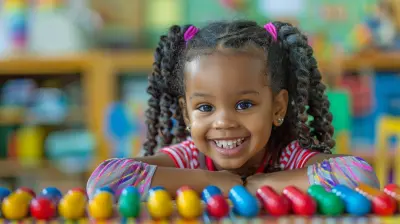Leadership in Collaborative Learning: Encouraging Student Ownership
4 November 2025
Have you ever noticed how much more invested students are when they feel like their voice matters? That’s the power of leadership in collaborative learning — it’s not just about passing knowledge from teacher to student, but lighting a fire that keeps students engaged, curious, and in charge of their own learning journeys.
In today’s classrooms, especially with online and hybrid models becoming more common, we’re seeing a big shift. Teachers are moving from “sage on the stage” to “guide on the side.” And you know what? That’s a good thing. This article is going to unpack how leadership in collaborative learning works, why student ownership is a game-changer, and how educators can foster a culture where every student becomes a leader in their own right.

What Is Collaborative Learning, Really?
Let’s start with the basics.Collaborative learning is more than just putting students in groups and hoping for the best. It’s a structured, student-centered approach where learners work together to explore concepts, solve problems, and reflect on ideas. It thrives on interaction — students don’t just absorb information; they build it together.
Whether it's peer discussion, group projects, or tech-driven forums, the key ingredient here is mutual engagement. Everybody brings something to the table, and guess what? That means everybody learns more.

Leadership: Not Just for Teachers
When we think of leadership in education, we often picture the teacher managing the class. But leadership in collaborative learning flips that idea on its head. Here, students become co-creators of their educational experience.This doesn’t mean throwing students in the deep end. It’s more like giving them the steering wheel with a map and GPS — they’re making decisions, charting paths, but still supported by an experienced navigator (you, the teacher).
Shared Leadership vs. Traditional Leadership
In traditional classrooms, the teacher is the sole leader. They lecture, students listen. End of story.In collaborative classrooms, leadership is shared. Students lead discussions, manage group tasks, set goals, and even assess their own learning progress. This kind of role reversal helps students build soft skills like communication, empathy, and accountability — all crucial for success in any career.

The Magic of Student Ownership
So, why is student ownership such a big deal?Because when students take ownership of their learning, they become more motivated, resilient, and independent. They’re not just learning for a grade; they’re learning for themselves.
Think of ownership like gardening. When students are allowed to plant their own ideas and watch them grow, they take greater care of the process. They water the seeds (study), pull the weeds (ask questions), and eventually harvest the fruit (master concepts). Ownership turns passive learners into active gardeners of knowledge.
Benefits of Student Ownership
- Higher motivation and engagement- Increased responsibility and accountability
- Stronger critical thinking and problem-solving skills
- Better collaboration and communication
- Improved academic performance
And let’s be honest — giving students a say in their learning just makes class more fun, doesn’t it?

How to Foster Leadership and Ownership in the Classroom
Okay, let’s get practical. Here are some real-world strategies to help you turn your classroom into a leadership lab and empower students to own their learning.1. Set Clear Expectations and Roles
Ever been part of a group where no one knew what to do? Total chaos, right?Start by defining group roles — facilitator, researcher, recorder, presenter, etc. Assigning roles helps structure collaboration and gives students a taste of leadership in manageable chunks.
Let them rotate roles, too. That way, everyone gets a chance to lead and support in different ways.
2. Encourage Goal-Setting and Reflection
Students need to see the “why” behind their work. Help them set personal learning goals and regularly check in on their progress. Self-reflection journals, peer feedback, and progress trackers are great tools here.Reflection isn’t just navel-gazing; it’s how we grow. When students reflect on their roles, decisions, and collaboration habits, they become more aware and intentional.
3. Make Space for Student Voice
Want students to care more? Let them speak up.Offer choices in assignments, let them vote on project topics, or even co-create class rules. Giving students a voice shows that their ideas matter — and that’s incredibly empowering.
Think of it as turning the classroom into a shared workspace rather than a lecture hall.
4. Integrate Technology Thoughtfully
Tech tools like Google Docs, Padlet, and Trello can boost collaboration and student leadership. They make it easier to assign tasks, share feedback, and track group progress.Plus, students often feel more confident in digital spaces. It’s their turf! Use that to your advantage.
5. Normalize Mistakes
Leadership comes with risks — and sometimes failures. If students are afraid of messing up, they won’t take ownership.Create a classroom culture where mistakes are part of the process. Celebrate “productive struggles” and use them as opportunities for reflection and growth.
6. Provide Scaffolding (But Don't Micromanage)
Scaffolding is key. Students need support, but they also need freedom to explore on their own. Give them the structure to succeed but leave enough room for creativity and independence.Start small — maybe a short group activity where students manage the process. Then gradually increase complexity as their confidence grows.
Teacher as a Facilitator: The New Role
Let’s talk about your role in all this.In a collaborative, student-led classroom, the teacher becomes more of a coach than a commander. You guide discussions, offer feedback, and steer students toward deeper understanding — without taking over.
It’s like coaching a sports team: you don’t play the game for them, but you equip them with the skills, strategies, and mindset to win.
This shift can be challenging. It means letting go of some control, being okay with a bit of messiness, and trusting students to rise to the occasion. But the payoff? Huge.
Real-World Examples of Leadership in Collaborative Learning
Still not convinced? Let’s look at a few real examples where leadership and ownership made big waves.Example 1: Project-Based Learning in a High School Science Class
A teacher launched a six-week environmental science project where students chose their own topics (pollution, renewable energy, etc.) and worked in teams to research, create presentations, and propose solutions.Students assigned roles, held meetings, and even brought in guest speakers. The teacher acted as a mentor, helping when groups hit roadblocks.
Outcome? Students were more engaged, learned deeper content, and took pride in presenting their findings.
Example 2: Peer-Led Math Circles
In a middle school classroom, students led math circles once a week — small groups where they explored complex problems collaboratively.The teacher picked intriguing problems but let students guide the conversation. Leaders rotated weekly.
The result? Sharper problem-solving skills and more confidence, especially among students who usually stayed quiet.
Challenges and How to Overcome Them
Now, we’ve painted a rosy picture, but let’s be real — collaborative learning and student leadership aren’t always smooth sailing. You’ll face bumps along the way.Common Challenges:
- Uneven participation in groups- Students avoiding leadership roles
- Conflicts or disagreements
- Varying skill levels
Solutions:
- Teach collaboration skills explicitly- Model effective leadership behavior
- Use peer and self-assessments
- Step in with support when needed — but don’t take over completely
It’s a learning curve for everyone — students and teachers alike.
Leadership Beyond the Classroom
One of the best things about teaching leadership and ownership through collaboration? It doesn’t stay confined to the classroom.Students who learn to communicate, organize, and reflect become better teammates, employees, and citizens. They’ll carry those skills into college, the workplace, and their communities.
And who knows? You might just be shaping the next generation of compassionate leaders without even realizing it.
Final Thoughts
Leadership in collaborative learning isn’t just an educational trend — it’s a transformative approach that empowers students to take control of their educational journey.When we trust students to lead, engage with their peers, and take ownership of their learning, we don’t just teach content. We teach life.
So — next time you’re planning a lesson, ask yourself: “How can I make space for student leadership here? Where can students make decisions or lead their own learning?”
The answer could change everything.
all images in this post were generated using AI tools
Category:
CollaborationAuthor:

Bethany Hudson
Discussion
rate this article
1 comments
Lyla Kline
Excited to explore how fostering ownership enhances collaboration and drives student engagement in learning!
November 13, 2025 at 4:14 AM

Bethany Hudson
Thank you! I'm thrilled that you're excited to explore the impact of ownership on collaboration and student engagement. It's a powerful approach to learning!


